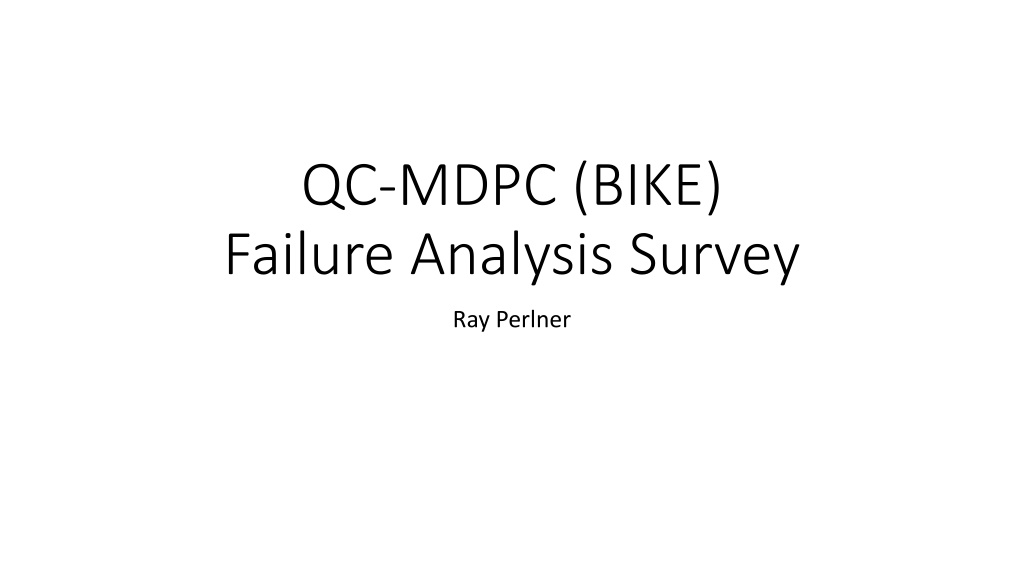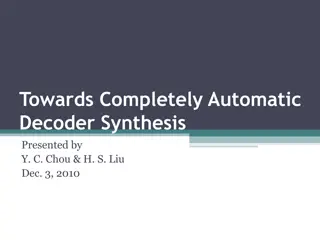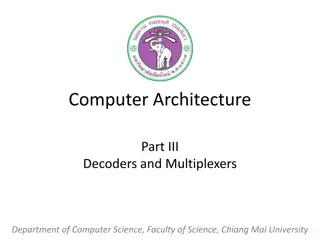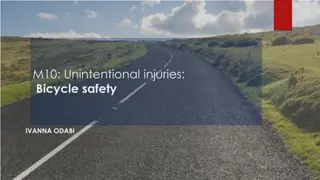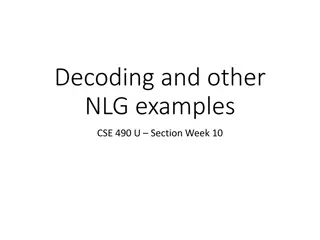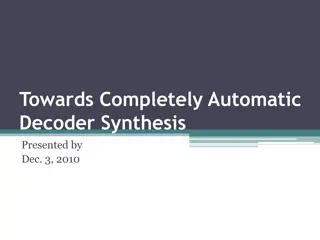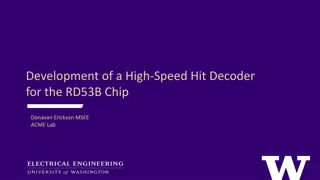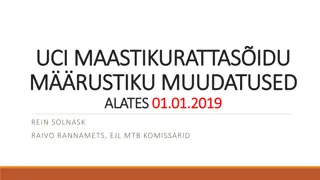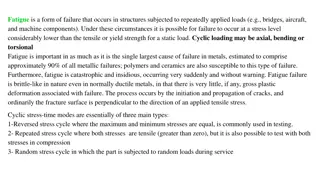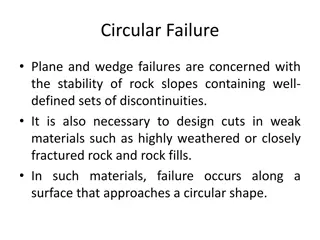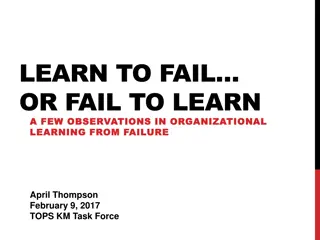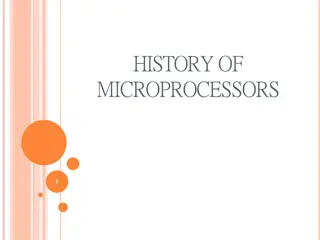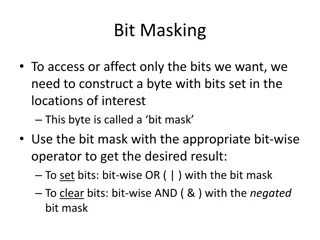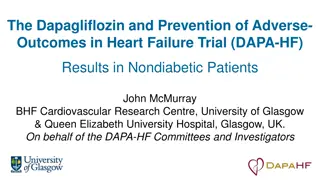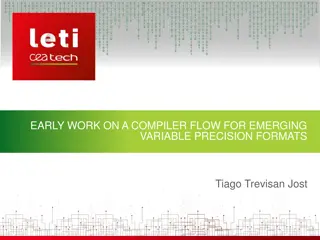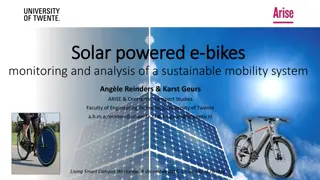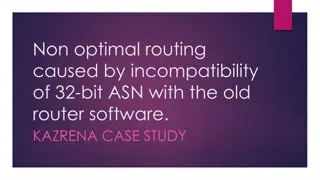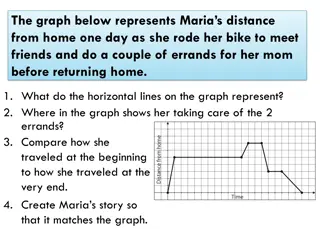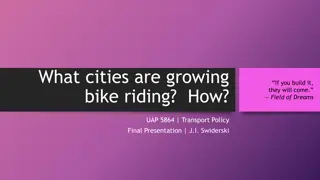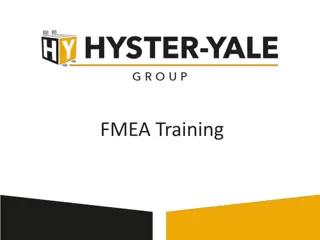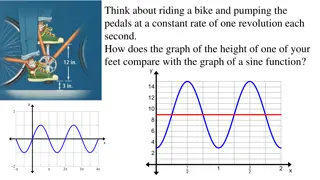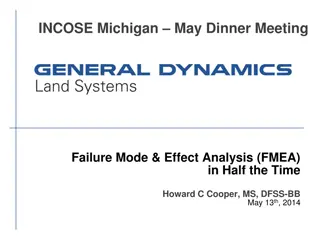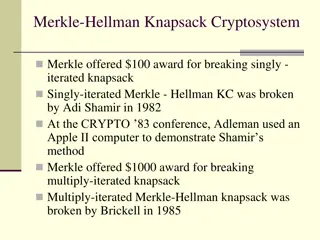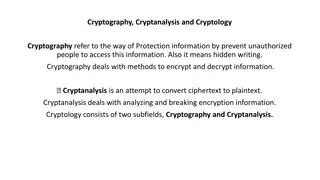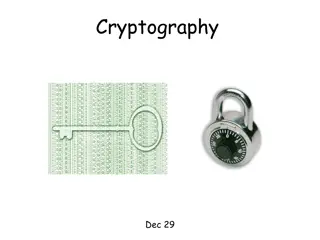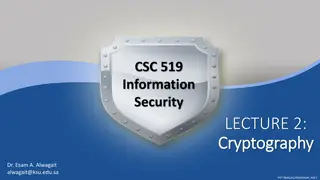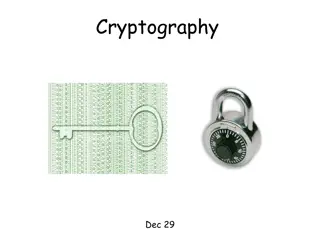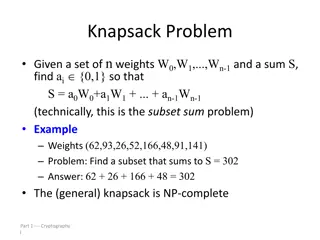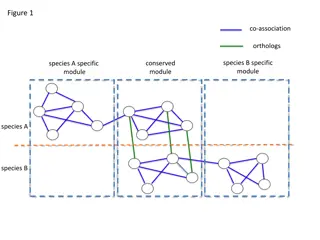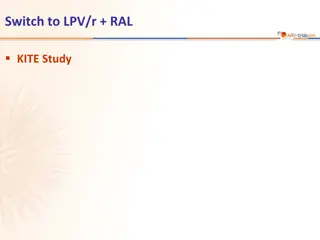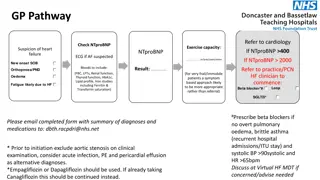BIKE Cryptosystem: Failure Analysis and Bit-Flipping Decoder
The BIKE cryptosystem is a code-based KEM in the NIST PQC standardization process, utilizing the Niederreiter variant of the McEliece Construction with a QC-MDPC code. It ensures security against IND-CPA, and efforts are made to further confirm or disconfirm its estimates for IND-CCA security requirements. The construction involves a quasi-cyclic structure and utilizes a bit-flipping decoder for efficient decoding.
Download Presentation

Please find below an Image/Link to download the presentation.
The content on the website is provided AS IS for your information and personal use only. It may not be sold, licensed, or shared on other websites without obtaining consent from the author. Download presentation by click this link. If you encounter any issues during the download, it is possible that the publisher has removed the file from their server.
E N D
Presentation Transcript
QC-MDPC (BIKE) Failure Analysis Survey Ray Perlner
Overview BIKE is a code based KEM and a 3rdround candidate in the NIST PQC standardization process It uses the Niederreiter variant of the McEliece Construction, with a QC-MDPC code Alternately, this could be viewed as the NTRU construction with Hamming metric Unlike Goppa McEliece, QC-MDPC McEliece has a decoder that sometimes fails In order to get IND-CCA security for up to 264queries, the failure rate must be very low The BIKE team s best estimates of the failure rate for BIKE s parameters is low enough But are the estimates correct? The BIKE team does not claim their estimates are correct, and therefore only claims IND-CPA security Can we do more to confirm or disconfirm
Quasi-Cyclic Structure Use ? = 2?; ? = ?, where ? is prime and ?? 1 is (? 1) times a primitive polynomial mod 2. Represent r ? blocks as polynomials in the ring GF2 ? /?? 1. Now block multiplication commutes. And blocks only require ? bit representation. They look like this: ? ? ? ? ? ? ? ? ? ? ? ? ? ? ? ? ? ? ? ? ? ? ? ? ? ? ? ? ? ? ? ? ? ? ? ?
BIKE Construction (Niederreiter) Public key: Blockwise cyclic parity check matrix H = ? = ? 1? ; ?,? is short (weight ?) in Hamming metric Ciphertext: c = ???= ?0+ ?1 (?0,?1) is short (weight ?) in Hamming metric Decoding Private key allows decoding of ?? = ??0+ ??1= ? Bit flipping algorithm If decoding succeeds, use (?0,?1) to derive a shared secret Combine with Fujisaki-Okamoto transform for CCA security, if failure rate is low enough ?0 ?1 ? using
BIKE Parameters Note: ? and ? are approximately equal to the security parameter ? ?? 2 To lower the DFR, increase ?, while fixing ?, ?
Bit-Flipping Decoder ?0 ?1 = ? for ?0 We want to solve ? Think of ?,? as matrices Since ?0 ?1 Each column has weight ? Since ?? 2< ?, not many bits cancel So the columns in the sum (with same index as nonzero bits of ?0 with ? Iterated algorithm to decode Guess that the columns with a lot of 1s in common with ? are nonzero bits of ?0 Subtract off the syndrome corresponding to the guess from both sides of ? ?0 ?1 If ? = 0, you re done. Otherwise, try to decode ? same way as ? ? ?1 is ?-sparse, ? is the sum of ? columns of ? ? 2 ?1) share a lot of nonzero bits ?1 ? ?0 ?1 = ? Resulting in ? ? = ?
Other Decoders Many variants of the basic bit flipping decoder have been proposed Backflip decoder (2ndround) [Sendrier, Vasseur 2019] Black-Grey-Flip (BGF) decoder (pre-3rdround) [Drucker, Gueron, Kostic 2019] Usually the motivation is a lower decryption failure rate However, all decoders work on a similar principle to bit flipping No proposed parameter set claims a zero decryption failure As we ll see later, the DFR cannot be 0 Why are decryption failures bad?
GJS attack [Guo, Johansson, Stankovski 2016] The bit flipping decoder doesn t always work Ciphertexts/error vectors that induce failures give statistical info about private key Error vectors where there are bits the same distance apart as two bits of the private key are LESS likely to induce a decoding failure Lists of distances between pairs of nonzero coefficients in each of ?,?,?0,?1are called distance spectra Can recover a key with ~100,000 known decryption failures Interesting tidbit: If ALL of the nonzero coefficients of ?0 ?1 higher. Too rare to use? are in ?0or ?1the DFR is
Error Amplification [Nilsson, Johansson, Wagner 2018] Builds upon distance spectrum idea from GJS attack Can use a known decryption failure to build other ciphertexts more likely to produce a decryption failure This means that the majority of the cost of the attack involves finding the first decryption failure If the number of iterations to used to decode is variable, that side channel information can be used to speed up finding the first decryption failure We think BIKE s current implementation is constant time, and if we discover it isn t, we will expect them to fix it
Bounding the Error Rate When the DFR is high, e.g. 2 35or more, it can be directly measured But, to protect against known attacks, need DFR< 2 64, and to prove security need DFR< 2 128(Cat 1) or DFR< 2 192(Cat 3) How do we know when we reach these targets if we cannot directly measure the DFR? LEDAcrypt s approach was to use really conservative parameters (~50% larger key sizes than BIKE) and get a loose upper bound on the DFR But they had other problems (attacked and patched in 2ndround, due to extra structure removed in patch) BIKE derives a curve to fit the relation between the parameter ? and the DFR from a Markov model with simplified asssumptions, and extrapolates
Markov Model and Extrapolation [Sendrier, Vasseur 2018], [Sendrier, Vasseur 2019], [Drucker, Gueron, Kostic 2019] Simulate a simplified decoding algorithm using a Markov model Drawbacks: Doesn t analyze actual BIKE decoder, but one which is simpler and empirically less efficient Treats bits of syndrome as independent random variables Treats any weight t decoding as a success Uses the derived form (exponential in ?2up to a critical value, then exponential in ?, no kink) to extrapolate DFR assuming critical point is as soon as it can be That this extrapolation works long enough is called concavity assumption in [Sendrier, Vasseur 2019] Error floors suggest it can t work forever, but might work long enough
Error Floors Image on right from [Richardson] illustrating similar phenomenon in related code to BIKE ? ? Note that ? This means ? matrix for the QC-MDPC code underlying BIKE, and its rows are codewords of weight ? If the error pattern shares at least w/2 one bits with a short codeword, there is another codeword with the same syndrome, and decryption must fail with at least 50% probability For category 1 BIKE parameters this means the DFR is at least 2 346 ? = 0 ? is a valid generator ?
Directions for Future Work Can we get a tighter proven bound on DFR , preferably with a more efficient decoder, than what the LEDAcrypt team did Maybe some kind of computer aided proof? This is the dream, but I have no idea how to do it Can we test the convexity assumption with the real decoder Use parameters targeting a low security parameter, so we can directly measure error floor area Use normal, or intermediate parameters, but amplify error floor phenomenon by choosing error vectors near (but not within ? ?/2 of) known, short codewords
References Latest BIKE spec. https://bikesuite.org/files/v4.0/BIKE_Spec.2020.05.03.1.pdf Reaction attack Guo, Johansson, Stankovski 2016: https://eprint.iacr.org/2016/858.pdf Error Amplification Nilsson, Johansson, Wagner 2018: https://eprint.iacr.org/2018/1223.pdf Estimating/bounding failure rate Markovian analysis (Simple decoder, infinite iterations) [Sendrier, Vasseur 2018]: https://eprint.iacr.org/2018/1207 Extrapolation (Backflip decoder) [Sendrier, Vasseur 2019]: https://eprint.iacr.org/2019/1434.pdf Extrapolation (Black and Gray Decoder) [Drucker, Gueron, Kostic 2019]: https://eprint.iacr.org/2019/1423 Explicit bounds for 1 (tight) or 2 (loose) iterations (IR BF Decoder) [Baldi et al. 2020] https://re.public.polimi.it/retrieve/handle/11311/1144467/513367/SECRYPT_2020_118_CR.pdf Describing error floors (I don t think this paper originated the idea): [Richardson]: https://web.stanford.edu/class/ee388/papers/ErrorFloors.pdf
